The following is a compilation of significant dates in our nation's and the commonwealth’s military history. For more on the legacy of our Citizen-Soldiers and Airmen, visit the
Kentucky National Guard eMuseum.
[caption id="" align="aligncenter" width="576"]
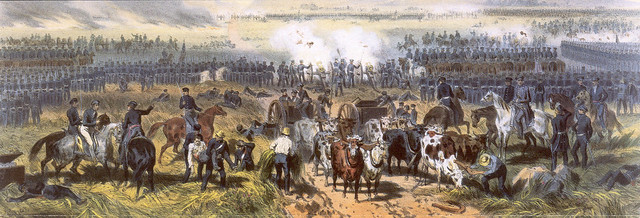
Battle of Pal Alto, May 8, 1846
May 1, 1970– Cambodia Campaign began (Vietnam War)
May 2-3, 1863 - Battle of Chancellorsville, Virginia (Civil War)
May 2, 1936 - First records of Kentucky National Guardsmen assisting in the security of Churchill Downs for the Kentucky Derby.
May 2, 1945 – German unconditional surrender to Italian Allies (World War II)
May 5, 1813 – Brig. General Green Clay, with 3,000 Kentuckians, reaches besieged Fort Meigs, Ohio. On orders from General William Henry Harrison divides his force, his part of the force cuts their way through the enemy's lines into the fort. 800 Kentuckians, under Col. Wm. Dudley, are order to cross the Maumee River and attack the guns and spike them so they can no longer fire. Once this was accomplished, the militia pursues what appears to be retreating Indians under the leadership of Tecumseh. After they entered the woods, the Indians counterattacked while the British forces swung around their flanks cutting most off from the river. Only about 150 escaped with the remainder being killed or captured. Of those captured, about 50 were murdered by the Indians before Tecumseh put a stop to it. The British, without use of their artillery, soon lifted the siege and moved back into Canada (War of 1812)
May 5, 1942 – Fall of Corregidor (World War II)
May 5, 1968 – Mini-Tet began (Vietnam War)
[caption id="" align="aligncenter" width="300"]
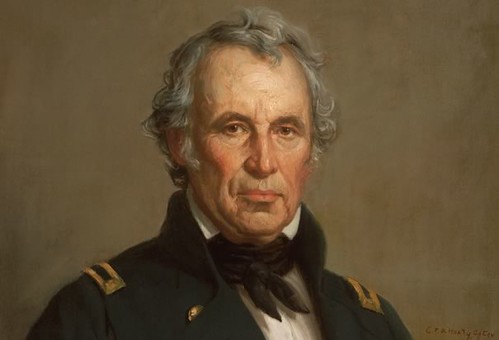
Gen. Zachary Taylor
May 8, 1846 – General Zachary Taylor defeats the Mexicans at Palo Alto (Mexican-American War)
[caption id="" align="alignleft" width="150"]
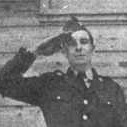
Pvt. Roy Edward Goodpaster
May 8, 1945 – Pvt. Roy Edward Goodpaster, Company D, 192nd Light Tank Battalion (Harrodsburg Tankers) died at Camp Moji Hospital Fukuoka #4 Kyushu Island Japan of wounds received aboard the “Hell Ships” Oryoku Maru & Enoura Maru (World War II)
May 8, 1945 – VE (Victory Europe) Day, Germany’s Unconditional Surrender Signed (World War II)
May 8, 1972 – U.S. Navy mined North Vietnamese ports (Vietnam War)
May 9, 1781 – McAfee Station, along Salt River attacked by over 150 indians. Only 13 men and their families inside who kept up a gallant defense for near 1/2 day until help arrived from nearby Harrodsburg. One settler killed at onset of action, 1 minor wounded. As pursuit was made the Indians made a stand at the ford of the river 1 more killed and 1 injured when thrown from horse. (Early Indian Wars)
May 9, 1846 – General Zachary Taylor defeats the Mexicans at Resaca de la Palma (Mexican-American War)
[caption id="" align="alignleft" width="280"]
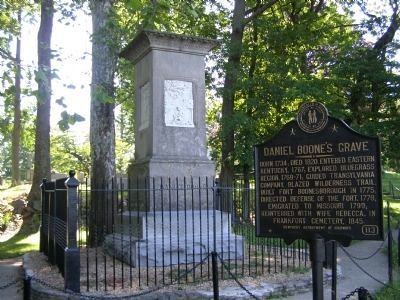
Daniel Boone Gravesite in Frankfort Cemetery
May 9, 1868 – Kentucky Legislature to present a Gold Medal to Samuel Hatfield, of Floyd County, another survivor of the Kentuckians who assisted in achieving Perry's victory on Lake Erie, September 10, 1813.
May 9, 1868 – Kentucky Legislature appropriates funding to repair monument over Daniel Boone's grave, which had been defaced by Federal soldiers during the war.
May 10, 1773 – The McAfee Company (James Jr., Robert, & George McAfee along with James McCoun Jr. and Samuel Adams) left Virginia on a 4-month expedition into Kentucky . Explored lands along Ohio & Kentucky Rivers. descended the Kentucky to where Frankfort now is located, continued exploration of Henry, Franklin, Anderson, & Mercer Counties. Eventually making land claims along Salt River.
May 10, 1863 - Confederate General "Stonewall" Jackson dies from wounds after being fired upon by his own men a week earlier. (Civil War)
May 10, 1969 – Battle for Hill 937, nicknamed Hamburger Hill (Vietnam War)
May 10, 1972 – Operation Linebacker (Vietnam War)
May 11, 1871 – Re-interment at Crab Orchard, Lincoln, County, of the unknown Southern soldiers who fell at the Battle of Wildcat Mountain, in 1862.
[caption id="" align="alignleft" width="150"]
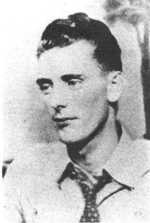
Pfc. Wesley Hungate
May 12, 1942 – Pfc. Wesley Davis Hungate, Company D, 192
nd Light Tank Battalion (Harrodsburg Tankers) died at Camp O'Donnell, Capas, Tarlac, Philippines of dysentery while a Japanese prisoner of war (World War II)
May 13, 1846 – Congress of the United States declares war on Mexico. Maj. Gen. E.P. Gaines makes a requisition on the Governor of Kentucky for 4 regiments of volunteers, comprising 2,400 men (Mexican War)
May 13, 1968 – 2
nd Battalion, 138
th Field Artillery entered active duty and served 11½ months in Vietnam. Kentucky was only one of two states to have both Air and Army Guard units called up in 1968 (the other being Kansas). Kentucky was the only state to have both Air and Army mobilized units deploy overseas (Vietnam War and Pueblo Call-up)
May 16, 1861 – Kentucky proclaimed its neutrality. (Civil War)
May 17 – Armed Forces Day.
May 17, 1846 – Governor Owsley issues a proclamation, appealing to Kentuckians "to form themselves into volunteer companies," and to report to him forthwith (Mexican War)
May 18, 1846 – The Louisville Legion, offer their services to the governor, and are accepted (Mexican War)
May 19, 1942 – Sergeant Ben R. Devine, Company D, 192nd Tank Battalion (Harrodsburg Tankers) died at Camp O'Donnell, Capas, Tarlac, Philippines of dysentery while a Japanese prisoner of war (World War II)
May 20, 1777 – St. Asaph's or Logan's Fort or Logan's Station resists attack by Indians (Early Indian Wars)
[caption id="" align="aligncenter" width="274"]
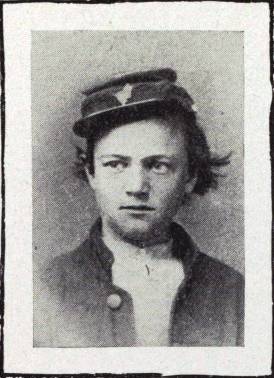
William H. Horsfall, Medal of Honor Recipient
May 21, 1862 - William H. Horsfall from Campbell County, Ky., a 15-year-old drummer with Company G, 1st Kentucky Infantry, saves the life of a wounded officer lying between the lines of fire at Corinth, Miss. Horsfall received the Medal of Honor for his actions. (Civil War)
May 22, 1846 – Formal proclamation of Governor Owsley for two regiments of infantry or riflemen, and one of cavalry, for the service of the United States against Mexico (Mexican-American War)
[caption id="" align="alignleft" width="400"]
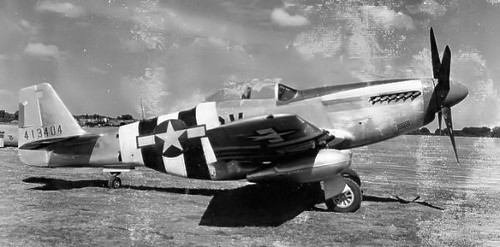
P-51 Mustang of the 359th Fighter Group
May 24, 1946 – The 359
th Fighter Group was redesignated as HQ, 123
rd Fighter Group, and allotted to the Air National Guard of Kentucky, together with its colors and World War II battle participation credits. The 368
th Fighter Squadron was also allotted to the KyANG with its colors and record, and redesignated as the 165
th Fighter Squadron.
May 25, 1921 – Private Manley Vaughan, Troop C, 53
rd Machine Gun Squadron, Louisa, Kentucky, was killed near Borderland W. Va. Kentucky National Guard soldiers from Louisa, Morehead and London were on state active duty from May 14, to June 4, 1921 along the Kentucky – West Virginia border in connection with a coal strike in the Tug River District.
At approximately 10 p.m. on May 25, 1921, a West Virginal State Policeman reported some sixty shots fired on the Kentucky shore of the Tug River below Nolan, West Virginia. Lt. Fred See of the Kentucky National Guard was stationed nearby in Pike County and asked by the West Virginia State Police to reconnoiter and try to end the disruption. There was a coal strike in progress in the area and martial law was in effect and the shots were apparently fired across the river in the direction of the Big Splint mining camp in West Virginia where the United Mine Workers union had erected a tent camp to house the striking miners.
Lieutenant See and seven men, including Vaughn, set out to investigate. They crossed the river at Borderland into West Virginia due to heavy rains making roads nearly impassable, he planned to follow the railroad track and cross back to the Kentucky side below Nolan to get to the site of the disturbance. At Nolan he was joined by an unknown number of West Virginia State Police and they proceeded down the track. Hearing a group of men coming up the track, Lieutenant See and his men advanced and stopped four men. When ordered to put up their hands, two men cooperated. Soldiers were searching the individuals for weapons when Vaughan and a West Virginia State Police Officer Charles M. Kackley were shot in the head from behind. Both were killed. One of the union miners in the group escaped in the darkness but was recaptured the next day.
May 26, 1846 – Governor Owsley announces, that the requisition upon Kentucky for troops is full (Mexican War)
May 26, 1871 – Confederate Memorial Day inaugurated, commemorating the occasion when Jefferson Davis was freed from prison.
May 27, 1778 – George Rogers Clark and men camp on Corn Island, at Falls of the Ohio (Louisville).
[caption id="" align="alignleft" width="205"]
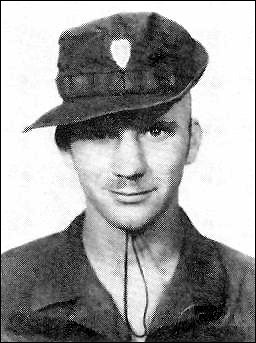
Charles Clinton Fleek, Medal of Honor Recipient
May 27, 1969 - Sgt. Charles Clinton Fleek from Petersburg, Ky. smothered the blast of an enemy hand grenade with his body, sacrificing his life to protect those around him fighting in Bihn Duong Province, Vietnam. Fleek was awarded the Medal of Honor for his gallantry and willing self-sacrifice. (Vietnam War)
May 30 – Memorial Day
May 30, 1806 - In Logan County, Ky., future president Andrew Jackson participates in a duel, killing Charles Dickinson, a lawyer regarded as one of the best pistol shots in the area. The proud and volatile Jackson, a former senator and representative of Tennessee, called for the duel after his wife Rachel was slandered as a bigamist by Dickinson, who was referring to a legal error in the divorce from her first husband in 1791. Jackson met his foe at Harrison’s Mills on Red River in Logan, Kentucky, on May 30, 1806. In accordance with dueling custom, the two stood 24 feet apart, with pistols pointed downward. After the signal, Dickinson fired first, grazing Jackson’s breastbone and breaking some of his ribs. However, Jackson, a former Tennessee militia leader, maintained his stance and fired back, fatally wounding his opponent. It was one of several duels Jackson was said to have participated in during his lifetime, the majority of which were allegedly called in defense of his wife’s honor. None of the other rumored duels were recorded, and whether he killed anyone else in this manner is not known. In 1829, Rachel died, and Jackson was elected the seventh president of the United States.
May 30, 1868 – By proclamation of General John A. Logan of the Grand Army of the Republic, the first major Memorial Day observance is held to honor those who died “in defense of their country during the late rebellion.” Known to some as “Decoration Day,” mourners honored the Civil War dead by decorating their graves with flowers. On the first Decoration Day, General James Garfield made a speech at Arlington National Cemetery, after which 5,000 participants helped to decorate the graves of the more than 20,000 Union and Confederate soldiers buried in the cemetery. The 1868 celebration was inspired by local observances that had taken place in various locations in the three years since the end of the Civil War. In fact, several cities claim to be the birthplace of Memorial Day, including Columbus, Mississippi; Macon, Georgia; Richmond, Virginia; Boalsburg, Pennsylvania; and Carbondale, Illinois. In 1966, the federal government, under the direction of President Lyndon B. Johnson, declared Waterloo, New York, the official birthplace of Memorial Day. They chose Waterloo–which had first celebrated the day on May 5, 1866–because the town had made Memorial Day an annual, community-wide event, during which businesses closed and residents decorated the graves of soldiers with flowers and flags. By the late 19th century, many communities across the country had begun to celebrate Memorial Day, and after World War I, observers began to honor the dead of all of America’s wars. In 1971, Congress declared Memorial Day a national holiday to be celebrated the last Monday in May. Today, Memorial Day is celebrated at Arlington National Cemetery with a ceremony in which a small American flag is placed on each grave. It is customary for the president or vice president to give a speech honoring the contributions of the dead and to lay a wreath at the Tomb of the Unknown Soldier. More than 5,000 people attend the ceremony annually. Several Southern states continue to set aside a special day for honoring the Confederate dead, which is usually called Confederate Memorial Day.